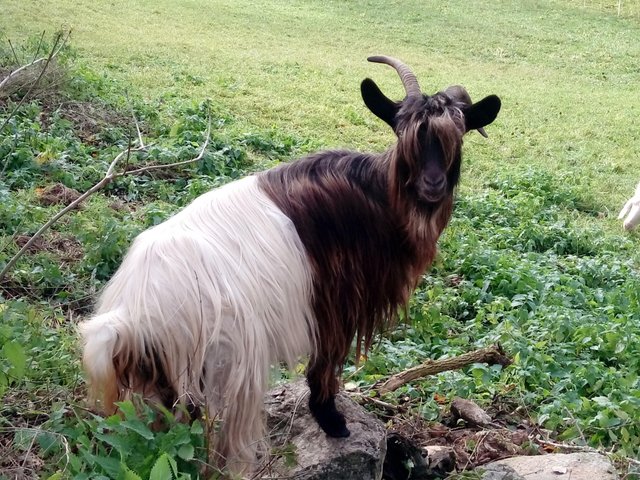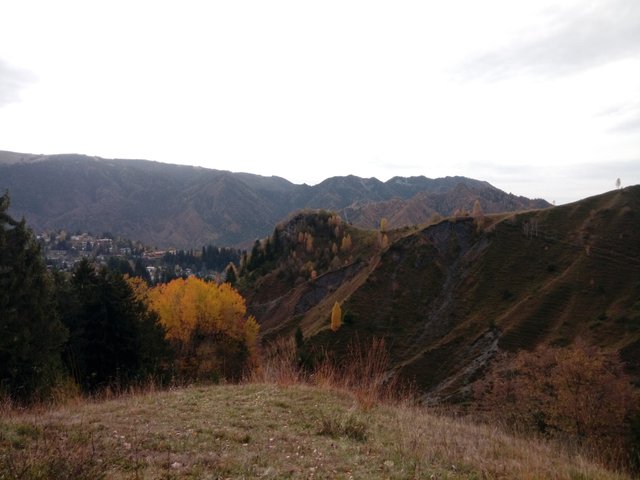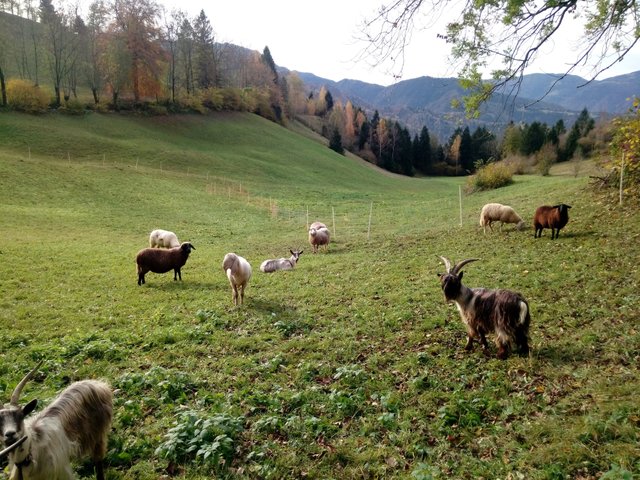La vallesana dal collo nero (kork75)
Girando per le mie valli.🌲
Oggi vi presento la vallesana dal collo nero o vallese. 🐐È una capra antichissima d'origine incerta (forse Svizzera), la si può trovare su tutto l'arco alpino occidentale. In Italia ne esistono diversi esemplari presenti soprattutto in Piemonte e Lombardia nella zona di confine con il Cantone svizzero del Vallese.
In Francia è chiamata Col noir du Valais in Germania e Svizzera Walliser Schwarzhalsziegee. Esistono alcuni capi anche in Inghilterra, dove questi singolari bovidi vengono chiamati Bagot goat. Bogat perché si narra che i primi esemplari furono dati in regalo alla famiglia Bogat nel 1380 da re Riccardo II. Probabilmente furono portate in Gran Bretagna dai crociati, di ritorno dal loro viaggio in terra santa.
"La vallesana dal collo nero"
(Foto di proprietà dell'autore)
Di taglia medio/grande, la barba è più pronunciata nel maschio mentre le corna tendono quasi sempre all’esterno e possono essere anche di discreta lunghezza è un animale robusto e di una certa forza ma tutto sommato docile. Il mantello è bicolore con pelo lungo. Il colore nero è nella testa, collo, arti anteriori, fino a metà corpo, poi di colore bianco su tutto il resto e sulla coda. Questo animale negli anni sessanta del secolo scorso ha rischiato di estinguersi, la ragione principale è da ricercarsi nella credenza che non sia una buona produttrice di latte, viene allevata quasi esclusivamente per la riproduzione di capretti da macello (possono raggiungere anche i 15 kg) e il latte prodotto serve quasi sempre al sostentamento di questi ultimi e in rari casi alla produzione di prodotti caseari.

Bratto (BG), pascoli ai piedi della Presolana
(Foto di proprietà dell'autore)
La carne del capretto di Vallese e gustosa e ricercata . E’ un animale
prevalentemente agreste che si adatta bene alla transumanza tra montagna e pianura. Il maschio ama vivere libero nei pascoli montani o in alpeggi impervi, a quote più basse predilige le aree boschive, si riunisce al gregge il più delle volte solo per la monta. La volontà di allevare questa razza è da ricercare quindi nella facilità di gestione, nella produzione di carne di capretto ma soprattutto per la sua unica e inimitabile bellezza. Nella bergamasca dove abito (alta Val Seriana) ci sono numerosi abili produttori di formaggi di capra e ricotte caprine, per la maggiore va anche lo yogurt magro ad alta digeribilità. Inoltre non può mancare nella cucina bergamasca il capretto con polenta😄.
Anche se personalmente a me piace di più vederla scorrazzare libera, "la mia bicolore pelosa preferita", a brucare in solitaria/o la sua erbetta🐐. Saluti Kork75

Bratto (BG) capre al pascolo
(Foto di proprietà dell'autore)
Eng🇬🇧
Today I present to you the Valaisan from the black neck or Valais. It is a very ancient goat of uncertain origin (perhaps Switzerland), it can be found throughout the Western Alps. In Italy there are several specimens present mainly in Piedmont and Lombardy in the border area with the Swiss canton of Valais.
In France it is called Col Noir du Valais in Germany and Switzerland Walliser Schwarzhalsziegee.
There are also some leaders in England, where these singular bovids are called Bagot goat. Bogat because it is narrated that the first specimens were given as a gift to the Bogat family in 1380 by King Richard II. They were probably brought to Britain by the Crusaders, returning from their journey to the Holy Land.
Medium/large size, the beard is more pronounced in the male while the horns tend almost always outside and can also be of discreet length, is a robust animal and a certain strength but all in all docile. The mantle is two-coloured with long hair.
The black color is in the head, neck, forelimbs, up to half body, then white color on everything else and on the tail. This animal in the sixties of the last century has risked to become extinct, the main reason is to be found in the belief that it is not a good producer of Leratte, is bred almost exclusively for the reproduction of kids for slaughter (they can Reach even 15 kg) and the milk produced almost always serves the livelihood of the latter and in rare cases to the production of dairy products. The meat of the Valais kid is tasty and refined. It is a predominantly rural animal that adapts well to the transhumance between mountain and plain.The male loves to live free in the mountain pastures or in Impervi meadows, at lower altitudes prefers the wooded areas, it gathers with the flock most of the time only for the assembles. The desire to breed this breed is therefore to be sought in the ease of management, in the production of kid's meat but especially for its unique and inimitable beauty. Greetings kork75
Fonti:Capre.it
li ho visti mentre ero di ritorno da Anversa in Belgio. ovviamente passando dalla Germania
😂sono così particori che se sono più di una si notano sicuramente 😉 Saluti Kork75